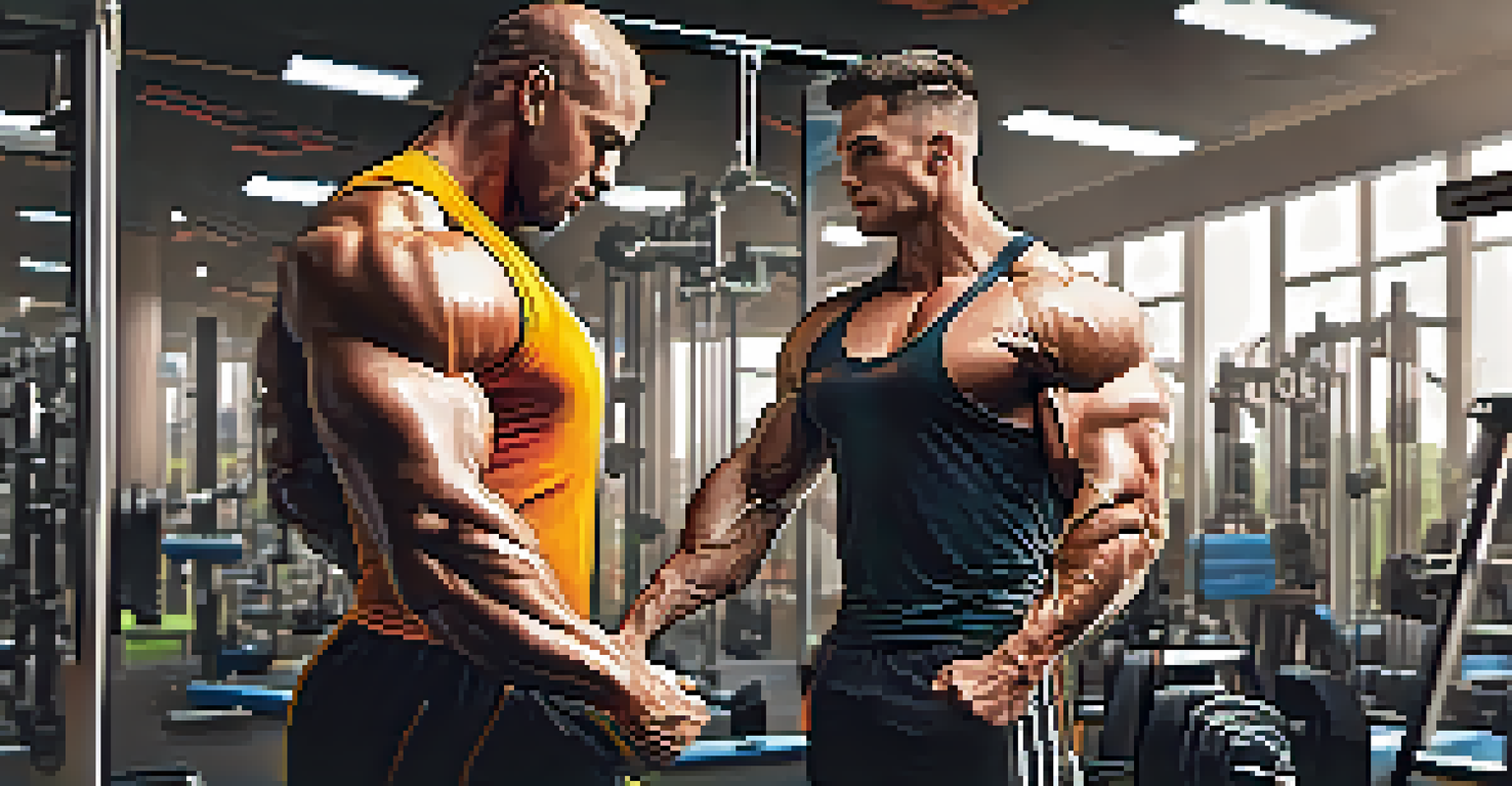Balancing Muscle Gain and Joint Health in Bodybuilding

Understanding Muscle Gain and Joint Health
When it comes to bodybuilding, muscle gain is often the primary goal. However, it’s crucial to consider joint health as well. After all, strong muscles are only as good as the joints that support them.
Take care of your body. It's the only place you have to live.
Joint health refers to the condition of the joints and how well they function. Poor joint health can lead to pain and injury, hindering your progress in the gym. Thus, finding a balance between building muscle and maintaining joint integrity is essential.
Related Resource
By understanding how muscles and joints work together, bodybuilders can create a training strategy that promotes both strength and longevity. This means being mindful of exercise selection and technique to protect those all-important joints.
The Importance of Proper Warm-Up Techniques
A proper warm-up is like prepping a canvas before painting; it sets the stage for what’s to come. Warming up increases blood flow to the muscles and joints, enhancing flexibility and reducing the risk of injury. It’s a simple yet often overlooked step.

Dynamic stretches, such as leg swings and arm circles, can be effective in preparing your body for a workout. Incorporating these movements can help lubricate the joints and make them more resilient during heavy lifting.
Balance Muscle Gain and Joint Health
Prioritizing joint health alongside muscle development is essential for long-term progress and injury prevention.
Remember, skipping the warm-up might save you a few minutes but can lead to long-term setbacks. Prioritizing this crucial step can lead to better performance and healthier joints over time.
Choosing Joint-Friendly Exercises
Not all exercises are created equal when it comes to joint health. While compound movements like squats and bench presses are great for muscle gain, they can also place significant strain on the joints if performed incorrectly. It’s essential to choose exercises that promote strength without excessive stress.
Strength does not come from physical capacity. It comes from an indomitable will.
Incorporating low-impact exercises, such as swimming or cycling, can help build muscle while being gentle on the joints. These alternatives allow for effective training without the added risk of injury associated with high-impact movements.
Related Resource
Additionally, using resistance bands or bodyweight exercises can provide a safer option for those wary of joint strain. Finding a balance between intensity and joint safety can lead to sustainable muscle gain.
The Role of Nutrition in Joint Health
Nutrition plays a vital role in both muscle gain and joint health. Consuming a balanced diet rich in anti-inflammatory foods, such as leafy greens, fatty fish, and nuts, can support joint function and recovery. Think of it as fueling your body with the right ingredients for optimal performance.
Incorporating essential nutrients like omega-3 fatty acids can help reduce joint inflammation, making it easier to perform those heavy lifts. Supplements such as glucosamine and chondroitin may also provide added joint support.
Warm-Up for Injury Prevention
A proper warm-up enhances flexibility and prepares your body, significantly reducing the risk of injury during workouts.
Ultimately, a well-rounded diet not only aids muscle growth but also protects your joints from wear and tear. Prioritizing nutrition can make a significant difference in your bodybuilding journey.
Listening to Your Body: Signs of Strain
As a bodybuilder, it’s easy to push through discomfort in the name of gains. However, listening to your body is crucial for maintaining joint health. Pain that persists beyond typical muscle soreness may indicate an underlying issue that needs attention.
Common signs of joint strain include swelling, sharp pain, and decreased range of motion. Ignoring these signals can lead to more severe injuries, sidelining your training for longer periods.
Related Resource
Taking a step back and allowing your body to recover can be tough, but it’s necessary for long-term success. Prioritizing recovery can ensure that you’re back in the gym stronger and more resilient.
Incorporating Rest and Recovery
Rest and recovery are just as important as your workout routine. Allowing your muscles and joints time to recover helps prevent overuse injuries and promotes muscle growth. Think of it as giving your body a chance to rebuild and strengthen.
Incorporating active recovery days, where you engage in light activities like walking or yoga, can enhance blood flow and speed up recovery. These activities can help maintain mobility without placing additional strain on your joints.
Nutrition Supports Joint Function
A balanced diet rich in anti-inflammatory foods can aid muscle growth while protecting joints from wear and tear.
Utilizing recovery techniques, such as foam rolling or massage, can also help alleviate tension in the muscles and joints. Embracing rest as part of your regimen can lead to better results in the long run.
Working with Professionals for Optimal Balance
Sometimes, seeking guidance from professionals can make all the difference in achieving balance. Working with a qualified trainer or physical therapist can help tailor your workouts to your individual needs, focusing on both muscle gain and joint health.
These professionals can offer valuable insights into proper form, exercise selection, and recovery strategies. They can also help identify any potential weaknesses or imbalances that could lead to injury.

Ultimately, investing in professional guidance can enhance your bodybuilding journey, ensuring you achieve your goals while preserving your joint health.